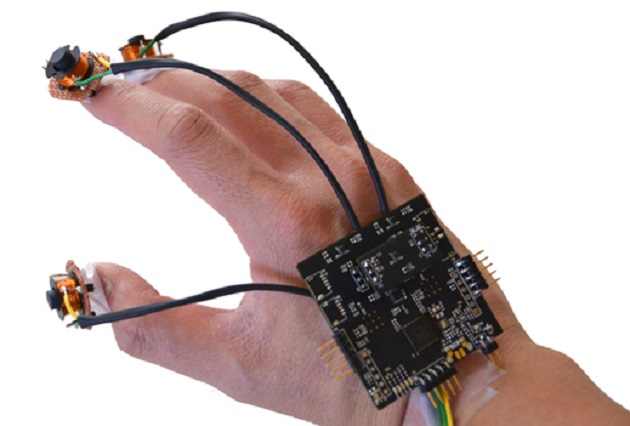There’re lots of innovative solutions being developed that aim to solve the issue of fully immersive interaction in virtual reality (VR). Some, like the Virtuix Omni are aiming at full body with a omni-directional treadmill, while others, Manus VR for example are trying a more nuanced approach with VR gloves. Oculus VR has already showcased earlier this year the Oculus Touch motion controllers, but it wants to create even better finger tracked devices, and so its research division Oculus Research and the University of Washington have collaborated on a new project to do just that.
The project, titled Finexus uses electromagnets on individual fingers and sensors on a circuit board to track movements in a 3D space, by measuring the distance between the two. The benefit over this type of system is that line of sight isn’t required, like that used by Oculus Touch with camera tracking or HTC Vive with its laser Lighthouse system. But the downside of the Finexus system is the distance, in its current form the sensors need to be less than five inches away.
Finexus was originally developed by Keyu Chen, a graduate student at the University of Washington’s computing lab. He started the project as an intern at Oculus Research in Redmond, Washington, during the summer.
While its still early days for the project, it’s this kind of research that Oculus VR is investing in to progress the immersive capabilities of VR, so one day controllers aren’t bundled with head-mounted displays (HMD) rather precise finger tracked devices.
VRFocus will continue to follow the latest technology news on VR devices and peripherals, reporting back any further announcements.
-END-
The post University of Washington and Oculus Research Trialling Magnet Tracked Fingers appeared first on VRFocus.















